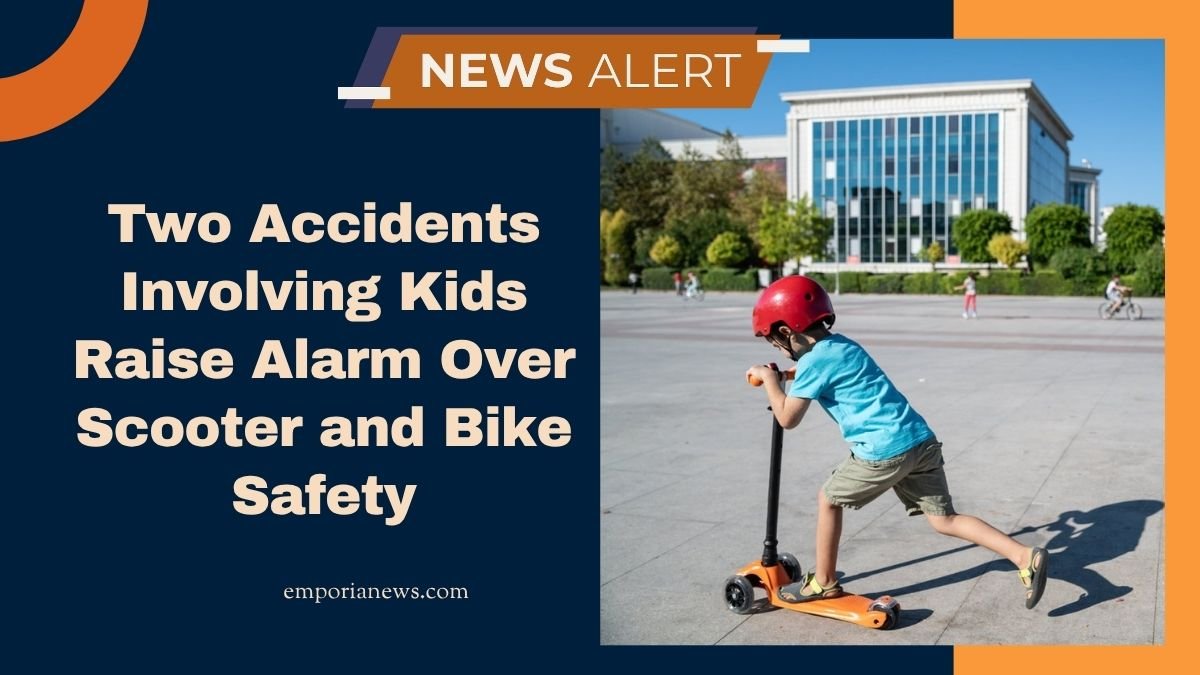A wave of alarming incidents in the Kansas City area — involving children on bicycles and electric scooters (e-scooters) — has reignited urgent discussions about safety rules, infrastructure, and parental vigilance.
Two recent crashes, one fatal and one severe, have shone a spotlight on the risks young riders face on local roads. This article examines the details, trends, causes, and practical safety lessons as municipalities and families grapple with the fallout.
Recent Crashes That Sparked the Concern
Here’s a breakdown of the two key incidents making headlines:
| Date / Time | Location | Victim / Vehicle | Details / Outcome |
|---|---|---|---|
| Oct 14, ~7:20 a.m. | Intersection of Longview Road & Food Lane Drive, Kansas City, MO | 9-year-old girl on bicycle | Struck by a white van while in the marked crosswalk with a green light — pronounced dead. |
| Oct 13, ~6:00 p.m. | Lee Boulevard north of W. 103rd Street, Leawood, KS | Juvenile on electric scooter | Hit by a vehicle, suffered critical injuries, now hospitalized. |
- In the first crash, the child was in the crosswalk, and authorities said the van was turning left when it struck her.
- In the Leawood crash, police remain actively investigating, and the victim’s condition is serious. The driver stayed on scene.
- Nearby communities report near-misses: for example, drivers in Westwood describe children darting into streets or colliding with parked vehicles while riding scooters. (Residents’ interviews)
These incidents have heightened fears that the infrastructure, laws, and awareness around youth riders are not keeping pace with increased use of bicycles and electric mobility devices.
Alarming Trends & Injury Data
- Children’s Mercy Hospital reports that from June 2024 to July 2025, they treated 467 children for bike and scooter injuries — including broken bones, internal injuries, and traumatic brain injury. The median age was 10 years. (This is just from their facility, not including other area hospitals)
- Many injuries involve falls, collisions with vehicles, or loss of control in traffic.
- Increasing popularity of e-scooters — and confusion over how they should legally be operated — adds a new layer of risk.
Key Safety Concerns & Contributing Factors
Several underlying issues are emerging:
- Visibility & Right-of-Way Misunderstanding
Children, especially in crosswalks or at intersections, may assume drivers see them. Turning vehicles often underestimate a rider’s speed or trajectory. - Helmet Usage & Protective Gear
Many youth riders are not wearing helmets or additional protective gear. Some jurisdictions do not mandate helmets for all ages. - Infrastructure Gaps
Sidewalks, bike lanes, protected crosswalks, and buffer zones may be lacking or inconsistent. Some local city plans (e.g. Westwood’s Complete Streets plan) include improvements, but enforcement lags. - Legality & Classification Confusion
Some devices look like motorcycles but are technically scooters or e-bikes under law. Riders and parents may misunderstand whether a device requires a driver’s license or helmet, especially for under-18s. - Lack of Education & Awareness
Both riders and motorists may not fully understand how to safely share road space with scooters and bikes. Schools and municipalities are under pressure to introduce safety curricula and community awareness.
Responses & Proposed Solutions
- Local leadership & advocacy
City council candidates in Westwood have called for mandatory helmet laws, school safety education programs, and stricter scooter regulation. - Law enforcement emphasis
The police chief noted that under Standard Traffic Ordinances in Kansas, e-scooters are treated like bicycles — riders must follow all traffic laws. He also recommends that riders dismount and walk across crosswalks to reduce risk. - Regulation changes in nearby cities
Cities like Prairie Village and Mission Hills have enacted or proposed more stringent rules, such as helmet mandates for under-18s, restrictions on sidewalk riding, or speed-class distinctions for e-bikes. - Infrastructure upgrades
Improved sidewalks, separated bike lanes, better signage, and safer crosswalk design are part of longer-term infrastructure plans in many municipalities.
What Parents & Riders Can Do: Safety Guidelines
- Always wear a properly fitted helmet; consider wrist guards, elbow & knee pads for younger riders.
- Stay visible — use lights, reflectors, bright clothing, especially in low light.
- At crosswalks, dismount and walk the bike/scooter if traffic is heavy.
- Understand local laws: whether sidewalk riding is permitted, whether scooters must be treated as bicycles or motor vehicles.
- Supervise younger children closely; educate them about traffic rules, right-of-way, and defensive riding habits.
The tragic bike crash that killed a 9-year-old girl and the severe e-scooter collision leaving a child critically injured have drawn sharp attention to safety gaps for young riders.
As scooter and bicycle use rises, particularly among children, the existing infrastructure, legal clarity, and safety awareness appear insufficient. To reduce risks, communities must simultaneously upgrade infrastructure, enforce sensible regulation, and invest in rider and driver education.
Parents and caregivers must remain vigilant — promote helmet usage, teach safe riding practices, and stay informed about local ordinances. Only a combined effort from municipalities, law enforcement, families, and schools can help safeguard the next generation of riders.




